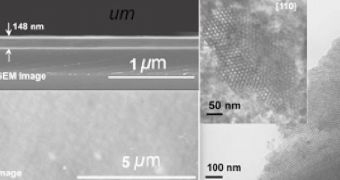Soon after decoding the human genome, researchers around the world began to create 3D models of thousands of proteins that could be found in the human body. And while the effort was successful in most cases, a certain class of them managed to elude the investigation. Proteins that are trapped in cell membranes have remained hidden from experts, and new imaging ways have been needed in order to make them viewable. Just recently, an international team of scientists has managed to create what seemed impossible, a new scientific process that literally forces these proteins out of their “shell” and into very thin layers, known as nanofilms.
“To the best of our knowledge, this is the first time aligned films less than a nanometer thick have been produced,” study investigators Iftach Nevo, a University of Aarhus in Denmark Marie Curie fellow, and Weizmann Institute of Science in Israel expert Leslie Leiserowitz said. The two collaborated with other experts from the two research institutions, as well as with scientists from the Max-Planck Institute of Colloids and Interfaces, in Germany, and from the Northwestern University, in Evanston, Illinois. The find was detailed in a paper published on April 14th in The Journal of Chemical Physics, a publication edited by the American Institute of Physics.
Traditional methods of constructing nanofilms imply creating them on the surface of water. The building blocks of the film are placed inside a solvent solution, which dissolves them. A tiny drop of the substance is then placed on water, and the solvent evaporates, leaving behind the blocks. They then come together as soap scum in the bathtub does. However, the drawbacks of this production method are immediately visible. The crystals are arranged chaotically, pointing in different directions. This orientation dictates the optical and physical properties of the end-nanofilm, and this particular one makes it difficult for experts to observe it, even with X-ray diffraction.
The innovation of the international team bypasses this problem by involving nanosecond pulse lasers, which are polarized and generated in such a way that they create a small electric field around the proteins. This forces them to spin slowly in the same direction, until they eventually come together in a much smoother material, which can be easily observed. Nevo and Leiserowitz shared that the new “alignment should enhance the X-ray diffraction intensity by more than two orders of magnitude allowing more detailed structure elucidations.”
Northwestern University expert Tamar Seideman, who was also a part of the research, highlighted the fact that the new arranging technique could also be used in the next generation of solar panels. These electricity generators are now developed to mimic the natural process of photosynthesis, and the alignment of their nanocomponents will be critical in determining how efficient and cost-worthy the new devices are.

 14 DAY TRIAL //
14 DAY TRIAL //